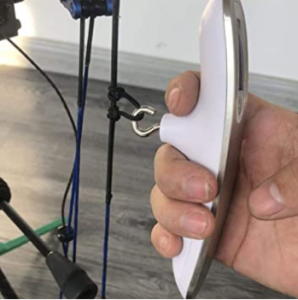How to Measure Draw Weight of a Bow
How to Measure Draw Weight of a Bow
The topic of draw weight is often brought up by new initiates into the art of archery. How do we define draw weight? What draw weight should they go with for their first bow? How does one measure the actual weight of a bow?
When measuring the draw weight of a particular bow, there are some important things to consider. This article examines these considerations. We will discuss how to measure the draw weight of a bow as well as some recommendations for choosing an appropriate draw weight if you are a beginner.

Definition of “Draw Weight” & How it is Measured
The draw weight of a traditional bow is defined as the amount of force (in pounds) that is required to draw the bowstring 28 inches from the back of the bow. 28 inches is the standard. If somebody tells you that the traditional bow they just purchased is 40 pounds, it means the force on the string at 28 inches is equivalent to 40 pounds.
Compound bows are a different beast, as they’re designed to mechanically compensate the archer when reaching full draw. This is known as “let off”. Some compound bows can have a draw weight at full draw that is only 20% of the draw weight of the bow before the cams are fully engaged. We will discuss more how draw weight applies to different bows in the section: Consideration 2: Type of Bow.
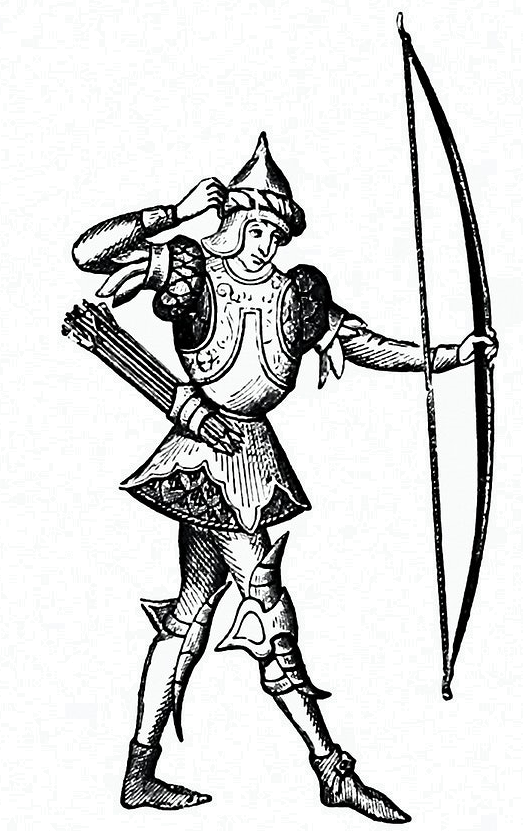
Consideration 1: Draw Length
Determining one’s draw length is important because as we’ve just discussed, draw weight is measured at 28 inches. Well, what if an archer has a draw that is longer than 28 inches, or shorter than 28 inches?
Typically, a bow’s draw weight will increase or decrease by approximately 2.5 to 3 pounds per inch past or before the standard 28-inch mark. This is only a rough guide, and depending on the type of bow (composite reflex, longbow), draw weights at different draw lengths can vary considerably.
Assume the guideline of plus or minus 2.5 to 3 pounds per inch is very accurate for a particular bow. This bow’s draw weight is rated at 40 pounds at 28 inches. An archer with a 31-inch draw length will require a force of approximately 47.5 to 49 pounds to bring the bow to full draw. [2.5*3=7.5, 7.5+40=47.5]

How to Measure Draw Length
Determining one’s draw length is fairly straight forward. Hold your arms out parallel with the ground. Hands and fingers should be outstretched. Measure from the tip of the longest finger on one hand to the tip of the longest finger on the other hand. Divide this number by 2.5. [Wingspan/2.5 = Draw Length]. The result of this computation will give you your draw length. Note, it is best to use inches as the standard for draw weight is measured at 28 inches.

Let’s Get Technical: Force-Draw Graph/Diagram
As previously mentioned, drawing a bow shorter or farther than 28 inches will result in a different draw weight at a particular draw length. Also, as previously mentioned, the archer could expect a variance of about 2.5 to 3 pounds per inch when drawing the bow shorter or past the 28-inch mark.
This is only a rough estimation, however. In order to get a more accurate idea of the draw weight at particular draw lengths, we could actually measure the force at certain lengths with a scale (see section: How to Measure Your Bow’s Draw Weight (Techniques)).
Non-linearity
We could then plot this data on a graph. We will designate the y-axis to represent the force or draw weight of the bow. The x-axis will represent the distance (draw length). This data will give us a more accurate representation of how the bow behaves at various draw lengths. This is known as a force-draw graph, force-distance graph, or f/d graph.
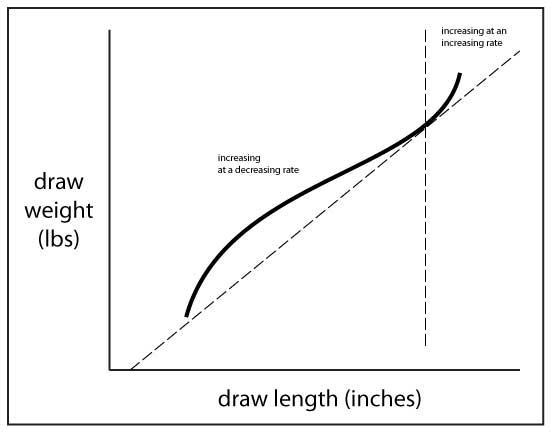
When looking at the above example of an f/d graph, one thing becomes interestingly apparent. The graph is not linear. The draw weight increases at first but at a slower and slower rate until it reaches the 28-inch mark (represented by the dotted vertical line). The draw weight then increases at an exponential rate past the 28-inch mark. This non-linear increase in draw weight past a certain draw length is what is known as “stacking”.
Below is an f/d graph of three bows. Can you tell what type of bows they are? Just by looking at this graph, you should be able to make an educated guess. Take a look and we’ll discuss a few interesting points.
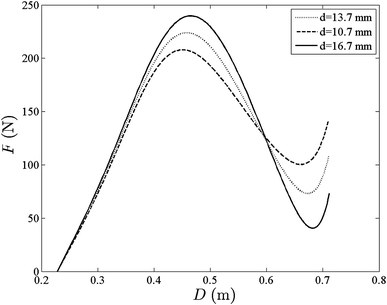
This f/d graph was made using measurements taken from modern compounds. What sticks out the most when first observing the graph? Well first off the graph uses the metric system with force in Newtons and distance in meters, but these can easily be converted to pounds and inches. The interesting feature here is what happens at about the 0.45-meter mark. The draw weights increase quite linearly up to this point, then there is a sudden drop. This is a result of the cams at the ends of modern compounds which allow for the archer to hold a bow at full draw at a considerably lighter draw weight.
Consideration 2: Type of Bow
Each type of bow will have a different f/d curve. The two main factors influencing the draw character of a bow are the materials it is made from and the geometry/shape of the bow. Different materials react differently to tension and compression. The types of materials and the way in which they are assembled greatly influence the draw characteristics.
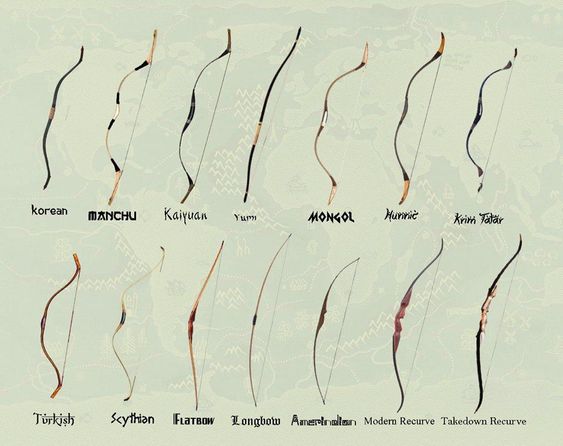
The geometry or shape of the bow will also have a great impact on its draw weight at various lengths. A simple self-bow (a bow made from one piece of material and does not have recurved limbs) will store less energy than a recurve or reflex/deflex bow. A recurve or reflex horsebow for example, stores more energy at lower draw weights than does a self-bow because of its design. The limbs are still under greater tension when the bow is strung and at rest than for a self-bow.
Stored Energy
As we all know, a bow is a device that stores potential kinetic energy. The efficiency with which the particular bow stores energy will determine its performance.
Now, the next concept we’ll discuss is known as “Stored Energy per Pound of Draw Force”, or SE/PDF. This is an averaged ratio derived from the force-draw (f/d) graph of a bow. It is derived from the area under the force draw curve of a particular bow. Consider the below f/d graph for three bows (A, B, C):
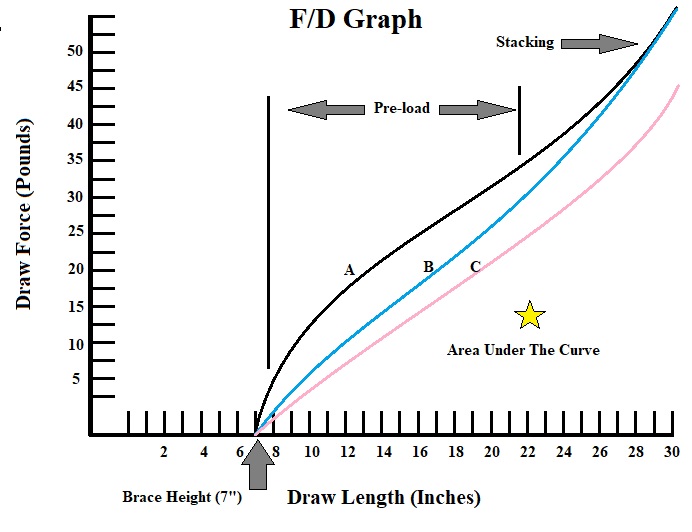
As can be noted from the above graph that bow (A) has a greater force at lower draw weights. This is known as “pre-load”. Many recurve and reflex horsebows exhibit this characteristic. Many recurves will also exhibit great stacking near the end of their physical draw limit.
So, things are not so straightforward, are they? If somebody tells you they have 3 different bows and that they all have a 60-pound draw weight, it really doesn’t tell you too much now, does it? Hopefully, by now you are better informed about the nuances of “draw weight”.
Consideration 3: Archery Fitness
If you are new to archery and considering purchasing a bow, you may be wondering what poundage or draw weight you should get. It is recommended that you gradually increase draw weight. You should get a light bow to start and work your way up. Some graphs and tables exist to give a rough guide as to what draw weights are suitable but there is one thing these tables fail to consider: the fitness of the archer.

Archers of the past were trained from early childhood with light bows. They gradually increased the size and power of their bows as they aged. As a result, they possessed the necessary musculature to fire very heavy bows. The draw weights of English Longbows recovered from the Mary Rose had draw weights of 100 pounds up to 200 pounds!
Many exercise regiments involving resistance training of some sort could assist the archer in training to help develop the physique required to draw heavier bows. Check out the article on Archery Exercises to Increase Draw Weight – Strengthen Archery Muscles for more on the topic of archery and fitness.

How to Measure Your Bow’s Draw Weight (Techniques)
The simplest way the measure your bow’s draw weight is to use a scale that can hook onto the bowstring. Several bow draw weight scales are available that are designed for this purpose.
We recommend CyberDyer 110. Its ergonomic grip and max weight limit of 110 pounds make it ideal for measuring archer draw weights. It can also be used to measure luggage weight and other items. It is very affordable at around $20 USD on Amazon. Click the images below to view the product on Amazon.
A fish scale also provides a similar means to take accurate measurements. Some things to consider when taking measurements this way:
- Ensure you are bringing the bow to the desired draw length. Using a measuring device to draw the bowstring may make your draw shorter. You must compensate for this
- Measure the draw weight at your full draw length
- Take measurements at 28 inches. You may compare this figure to the draw weight given by the manufacturer. This is also a good reference distance for comparing to other bows as it is the recognized standard length
- Take several measurements at different draw lengths and plot your own f/d graph!
- Use a sufficiently long arrow and mark the distances (28″, full draw, etc.) on it. When taking your measurements, you may have this “ruler” arrow nocked. This is for determining the length of the draw for measurement purposes.
- Arrow length is measured from when the arrow shaft joins arrowhead, to the shallowest point of the nock.
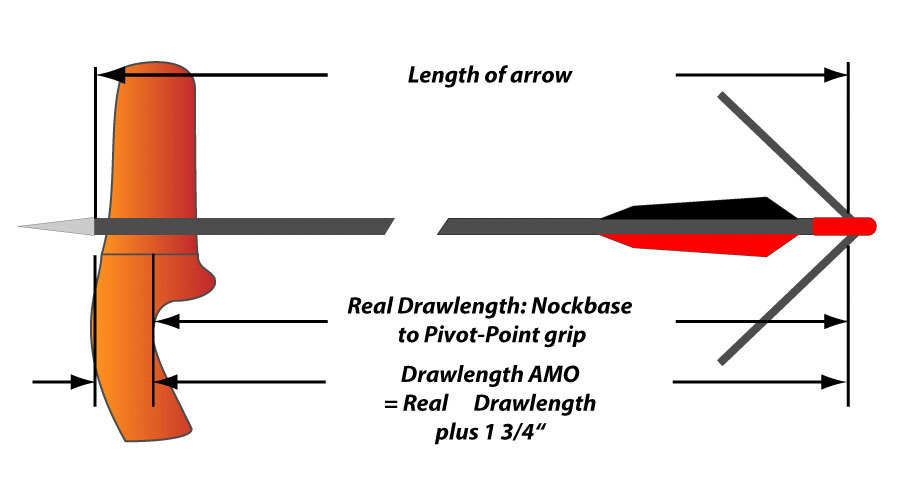
Check out the below video for more on how to measure draw weight of a bow:
